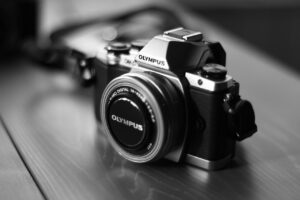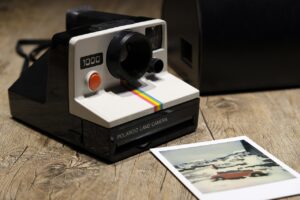From its humble beginnings as a primitive device capturing rudimentary images to its current state as a ubiquitous tool in modern society, the camera has undergone a remarkable evolutionary journey. In this article, we delve into the fascinating history of the camera, tracing its development from ancient origins to cutting-edge technology.
The Origins: Camera Obscura and Early Inventions
The story of the camera begins with the ancient concept of the camera obscura, a simple device that projected images onto surfaces. Dating back to ancient China and Greece, the camera obscura paved the way for early experiments in optics and image projection. It wasn’t until the Renaissance period, however, that artists and scientists began to explore its potential as a tool for capturing images.
In the early 19th century, the invention of the daguerreotype by Louis Daguerre and the calotype by William Henry Fox Talbot marked significant milestones in the history of photography. These early photographic processes laid the foundation for the development of the modern camera, enabling the creation of permanent images for the first time in history.
The Kodak Revolution: Making Photography Accessible
The late 19th century saw the rise of George Eastman and the Kodak Company, whose introduction of the Kodak camera revolutionized photography. With the slogan “You press the button, we do the rest,” Eastman made photography accessible to the masses by simplifying the process of taking and developing photographs. The invention of roll film further democratized photography, allowing amateur photographers to capture moments with ease.
The Rise of 35mm Film and the Birth of the Leica
In the early 20th century, the introduction of 35mm film by Oskar Barnack and the creation of the Leica camera marked another milestone in the evolution of photography. The compact size and versatility of 35mm film made photography more portable and spontaneous, paving the way for photojournalism and street photography. The Leica camera, with its precision engineering and superior optics, set new standards for image quality and reliability.
Polaroid and Instant Photography
The mid-20th century witnessed the invention of instant photography by Edwin Land and the Polaroid Corporation. With the introduction of the Polaroid camera, photographers could now see their images develop in real-time, revolutionizing the way people captured and shared moments. Instant photography became immensely popular, offering instant gratification and a tangible, physical form of memory preservation.
The Digital Revolution: From Pixels to Smartphones
The late 20th century saw the advent of digital photography, transforming the way images were captured, stored, and shared. With the introduction of digital cameras and image sensors, photographers could now capture images in a digital format, eliminating the need for film and chemical processing. The rapid advancement of digital technology led to the development of DSLR cameras, which combined the versatility of traditional film cameras with the convenience of digital technology.
In the 21st century, the rise of smartphones equipped with high-quality cameras has further democratized photography, putting the power of image capture into the hands of billions of people worldwide. With social media platforms enabling instant sharing and global connectivity, photography has become more pervasive and influential than ever before.
Conclusion
From its humble origins as a simple optical device to its current state as a sophisticated digital tool, the camera has come a long way in its evolutionary journey. Throughout history, the camera has not only captured moments but also shaped culture, society, and the way we perceive the world around us. As technology continues to advance, the future of photography holds endless possibilities, promising new innovations and discoveries yet to be imagined.
As we reflect on the history of the camera, we are reminded of its enduring legacy and its profound impact on human creativity, communication, and expression. From the daguerreotypes of the 19th century to the digital images of the 21st century, the camera remains an essential instrument in our collective quest to document, preserve, and share the richness of human experience.



